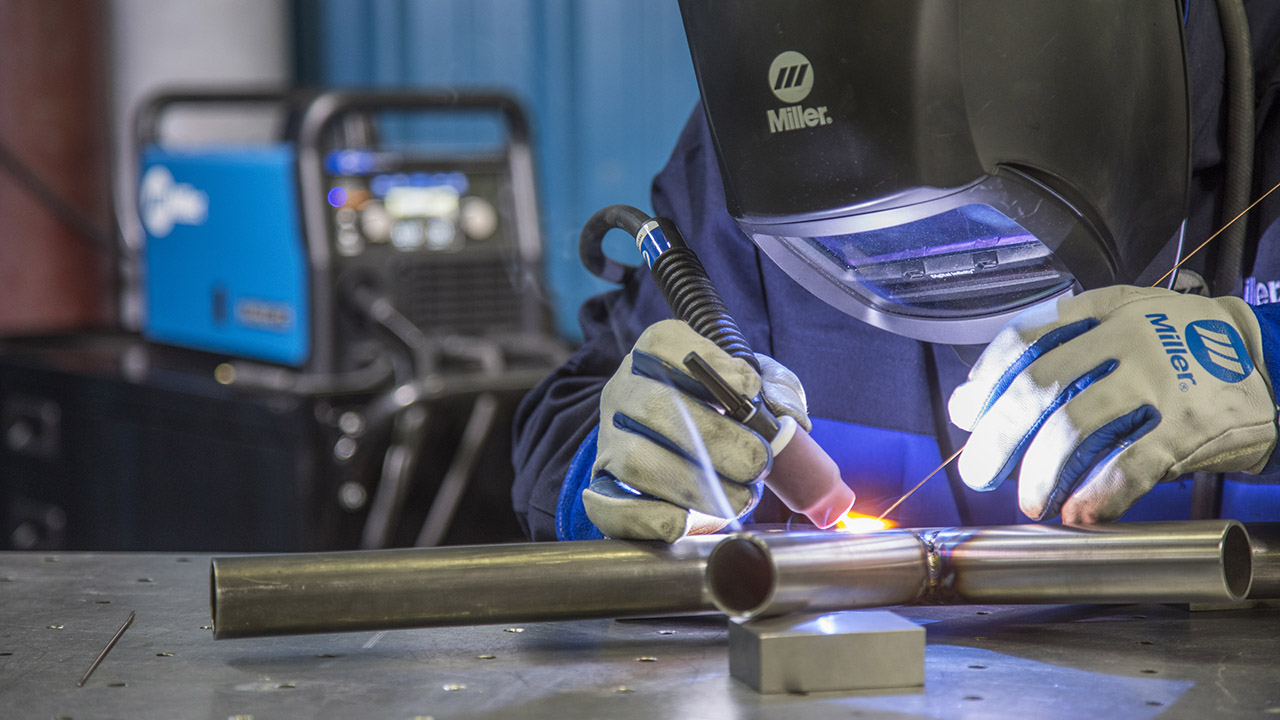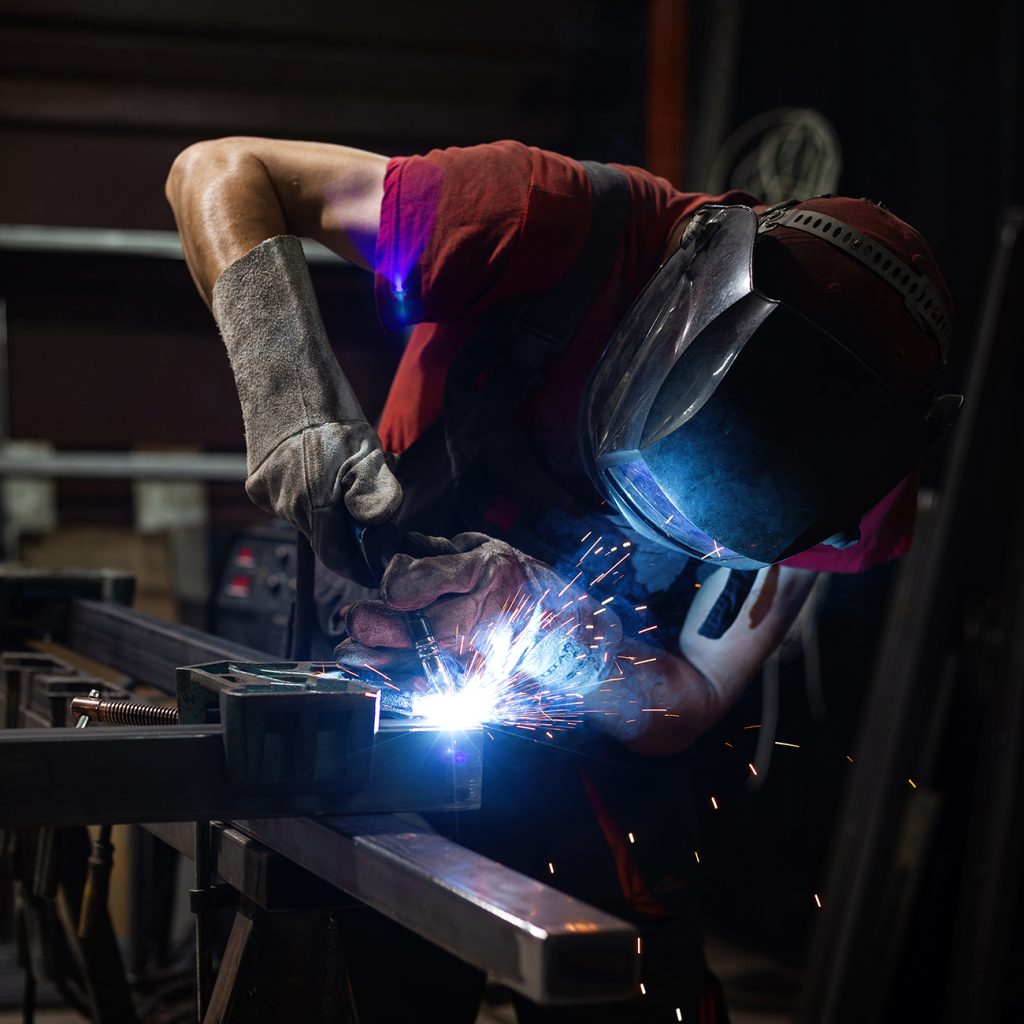Everything about Welding: Secret Insights Into Techniques and Best Practices for Success
Welding encompasses a range of methods, each fit for details products and applications. Comprehending these techniques, such as GMAW, SMAW, and TIG, is vital for achieving suitable results. The right equipment and safety techniques can not be neglected. As prep work and troubleshooting play critical roles in the welding procedure, grasping these aspects can significantly improve the top quality of the final item. What are the vital aspects that ensure an effective weld?
Understanding Different Welding Techniques
Welding methods include a selection of methods, each matched to particular applications and materials. Among one of the most usual techniques are Gas Steel Arc Welding (GMAW), Secured Metal Arc Welding (SMAW), and Tungsten Inert Gas Welding (TIG) GMAW, also understood as MIG welding, is preferred for its rate and versatility, making it excellent for thin materials. SMAW, or stick welding, is preferred for its simplicity and effectiveness in outside environments, particularly with thicker steels. TIG welding supplies precision and control, making it appropriate for detailed work and non-ferrous steels (Montana Mobile Welding and Repair Belgrade Fabrication). Each strategy has its distinct advantages and factors to consider, enabling welders to choose the very best method based on the job's demands, product kind, and wanted end results. Comprehending these strategies is vital for successful welding
Necessary Welding Equipment and Devices
While different welding strategies require particular abilities, the best tools and tools are equally necessary for attaining high quality results. Important welding tools consists of welding devices, which vary relying on the technique-- such as MIG, TIG, or stick welding. Protective gear, consisting of helmets, handwear covers, and aprons, warranties security and convenience during the procedure. In addition, clamps and fixtures assist safeguard materials in position, ensuring accuracy in welds. Consumables like welding poles, cable, and securing gas are also critical components that affect the quality of the weld. In addition, devices such as cutters and mills assist in surface area preparation and post-weld completing, adding to an expert outcome. Purchasing high-grade equipment ultimately improves the efficiency and performance of welding projects.
Safety And Security Practices in Welding
Appropriate security techniques are crucial in the welding industry to secure employees from possible dangers. Welders should use ideal personal safety equipment (PPE), consisting of headgears with appropriate shading, gloves, and flame-resistant clothes. Appropriate air flow is vital to lower exposure to dangerous fumes and gases produced during the welding procedure. In addition, workers ought to be educated in the right handling of welding tools to stop crashes. Fire precaution, such as keeping combustible materials away from the welding location and having fire extinguishers easily offered, are needed. Routine assessments of devices and workspaces can assist recognize potential risks before they result in accidents. By sticking to these safety and security methods, welders can create a safer working atmosphere and decrease threats connected with their profession.
Preparing Materials for Welding
Preparing materials for welding is a vital step that significantly affects the high quality and honesty of the last product (Montana Mobile Welding and Repair Belgrade Fabrication). Appropriate preparation includes cleansing the surfaces to eliminate contaminants such as dust, oil, and rust, which can jeopardize the weld. Methods such as grinding, sanding, or utilizing solvents are frequently used to achieve a clean surface. Furthermore, guaranteeing that the products mesh comfortably is important; spaces can lead to weak welds. It's likewise crucial to consider the alignment and positioning of the elements, as this will certainly affect the ease of welding and the final outcome. Lastly, selecting the proper filler material and guaranteeing compatibility with the base metals is important for achieving solid, durable welds
Tips for Getting High-Quality Welds
Attaining premium welds requires focus to detail and adherence to best practices throughout the welding procedure. Appropriate joint prep work is crucial, guaranteeing surface areas are complimentary and tidy from impurities. Picking the suitable filler product and welding strategy based on the base metals is vital for suitable bonding. Preserving constant traveling rate and angle while welding can stop problems and promote uniformity. Additionally, regulating heat input is important; too much warm can bring about warping and weakened joints. If needed, consistently inspecting the welds throughout the process permits for prompt adjustments. Ultimately, using suitable post-weld therapies, such as cleansing and stress and anxiety relief, can boost the sturdiness and stability of the weld, ultimately ensuring a successful outcome.
Fixing Usual Welding Issues
Welding usually presents obstacles that can impact the top quality and integrity of the end product. Usual problems such as porosity, irregular weld beads, and overheating can develop, each calling for specific repairing methods. Understanding these troubles is important for welders to enhance their skills and attain perfect outcomes.
Porosity Troubles Described
Porosity can commonly be ignored, it remains a crucial problem in welding that can endanger the honesty of a finished product. Porosity refers to the visibility of little gas pockets within the weld grain, which can compromise the joint and lead to premature failure. This issue generally emerges from impurities, wetness, or improper shielding gas protection during the welding procedure. To minimize porosity, welders must confirm that the base products are dry and clean, utilize ideal protecting gases, and preserve constant welding parameters. Regularly checking the equipment and environment can additionally aid recognize potential issues prior to they materialize in the weld. Addressing porosity efficiently is vital for achieving strong, resilient welds that meet quality criteria.

Inconsistent Weld Beans
Irregular weld beads can significantly influence the quality and stamina of an ended up product. Different aspects add to this issue, consisting of incorrect travel rate, inaccurate amperage setups, and inconsistent electrode angles. When the welder moves also swiftly, a grain might show up slim and do not have infiltration, while relocating too gradually can cause excessive build-up. Furthermore, using the incorrect amperage can cause either undercutting or too much spatter, both of which concession weld stability. The welder's technique, such as irregular lantern motion, can also result in irregular bead look. To mitigate these problems, welders should concentrate on maintaining constant, regulated motions and making sure correct tools setups to attain uniformity in their welds. Consistency is crucial to accomplishing solid and trustworthy welds.
Overheating and Warping Issues
Extreme warm during the welding procedure can result in more info considerable getting too hot and warping concerns, affecting the architectural integrity of the workpiece. These issues typically manifest as distortion, which can jeopardize positioning and fit-up, making additional assembly challenging. Variables contributing to overheating include the selection of welding parameters, such as voltage and take a trip speed, along with the sort of material being bonded. To reduce these concerns, welders need to maintain regular travel speed and suitable heat input while keeping track of the work surface temperature. Additionally, preheating or post-weld warmth therapy can assist relieve stresses brought on by rapid cooling - Montana Mobile Welding and Repair Belgrade. Regular evaluation and adherence to best practices are necessary in avoiding overheating and guaranteeing the durability and integrity of bonded frameworks
Regularly Asked Inquiries
What Are the Job Opportunities in the Welding Sector?
The welding sector offers diverse career possibilities, including settings as welders, designers, instructors, and assessors. Specialists can function in manufacturing, construction, aerospace, and automobile sectors, gaining from strong demand and competitive wages in numerous functions.
Just How Can I Enhance My Welding Rate Without Giving Up High Quality?
To enhance welding rate without compromising high quality, one ought to exercise effective methods, maintain tools, optimize setups, and enhance hand-eye control. Normal training and seeking feedback can likewise considerably contribute to accomplishing faster, top notch welds.
What Accreditations Are Available for Welders?
Numerous certifications exist for welders, consisting of those from the American Welding Society (AWS), the National Facility for Building Education and Research Study (NCCER), and different industry-specific organizations. These qualifications boost employability and show skill efficiency.
Exactly How Does Welding Influence the Features of Metals?
Welding affects the homes of metals by modifying their microstructure, which can bring about modifications in stamina, firmness, and ductility. Heat input and air conditioning prices throughout the procedure greatly affect these product characteristics.
Can I Weld Dissimilar Metals With Each Other?
